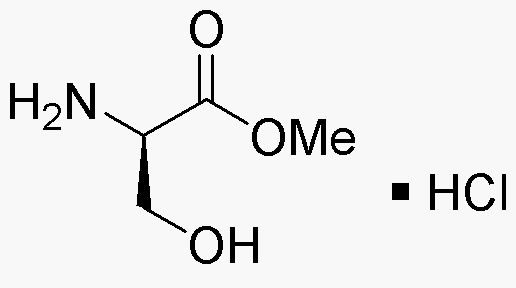D-Serine methyl ester hydrochloride is widely utilized in research focused on:
- Neuroscience Research: This compound serves as a valuable tool for studying the role of D-serine in neurotransmission, particularly in relation to NMDA receptors, which are crucial for synaptic plasticity and memory formation.
- Pharmaceutical Development: It is explored in the development of drugs targeting cognitive disorders, such as schizophrenia, due to its potential to modulate glutamatergic signaling.
- Biochemical Assays: Researchers use it in various assays to investigate metabolic pathways involving amino acids, helping to elucidate their roles in cellular functions.
- Neuroprotective Studies: The compound is studied for its neuroprotective effects, providing insights into therapies for neurodegenerative diseases by potentially reducing excitotoxicity.
- Behavioral Studies: It is applied in animal models to assess the impact of D-serine on behavior and cognition, offering a deeper understanding of its effects on learning and memory.
General Information
Properties
Safety and Regulations
Applications
D-Serine methyl ester hydrochloride is widely utilized in research focused on:
- Neuroscience Research: This compound serves as a valuable tool for studying the role of D-serine in neurotransmission, particularly in relation to NMDA receptors, which are crucial for synaptic plasticity and memory formation.
- Pharmaceutical Development: It is explored in the development of drugs targeting cognitive disorders, such as schizophrenia, due to its potential to modulate glutamatergic signaling.
- Biochemical Assays: Researchers use it in various assays to investigate metabolic pathways involving amino acids, helping to elucidate their roles in cellular functions.
- Neuroprotective Studies: The compound is studied for its neuroprotective effects, providing insights into therapies for neurodegenerative diseases by potentially reducing excitotoxicity.
- Behavioral Studies: It is applied in animal models to assess the impact of D-serine on behavior and cognition, offering a deeper understanding of its effects on learning and memory.
Documents
Safety Data Sheets (SDS)
The SDS provides comprehensive safety information on handling, storage, and disposal of the product.
Product Specification (PS)
The PS provides a comprehensive breakdown of the product’s properties, including chemical composition, physical state, purity, and storage requirements. It also details acceptable quality ranges and the product's intended applications.
Certificates of Analysis (COA)
Search for Certificates of Analysis (COA) by entering the products Lot Number. Lot and Batch Numbers can be found on a product’s label following the words ‘Lot’ or ‘Batch’.
*Catalog Number
*Lot Number
Certificates Of Origin (COO)
This COO confirms the country where the product was manufactured, and also details the materials and components used in it and whether it is derived from natural, synthetic, or other specific sources. This certificate may be required for customs, trade, and regulatory compliance.
*Catalog Number
*Lot Number
Safety Data Sheets (SDS)
The SDS provides comprehensive safety information on handling, storage, and disposal of the product.
DownloadProduct Specification (PS)
The PS provides a comprehensive breakdown of the product’s properties, including chemical composition, physical state, purity, and storage requirements. It also details acceptable quality ranges and the product's intended applications.
DownloadCertificates of Analysis (COA)
Search for Certificates of Analysis (COA) by entering the products Lot Number. Lot and Batch Numbers can be found on a product’s label following the words ‘Lot’ or ‘Batch’.
*Catalog Number
*Lot Number
Certificates Of Origin (COO)
This COO confirms the country where the product was manufactured, and also details the materials and components used in it and whether it is derived from natural, synthetic, or other specific sources. This certificate may be required for customs, trade, and regulatory compliance.


